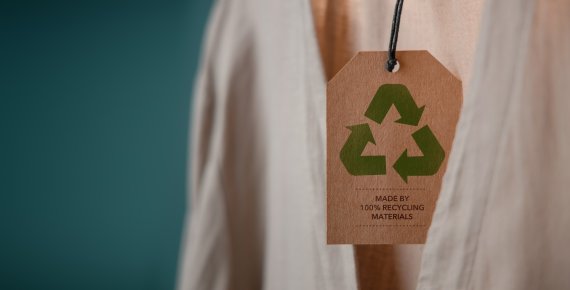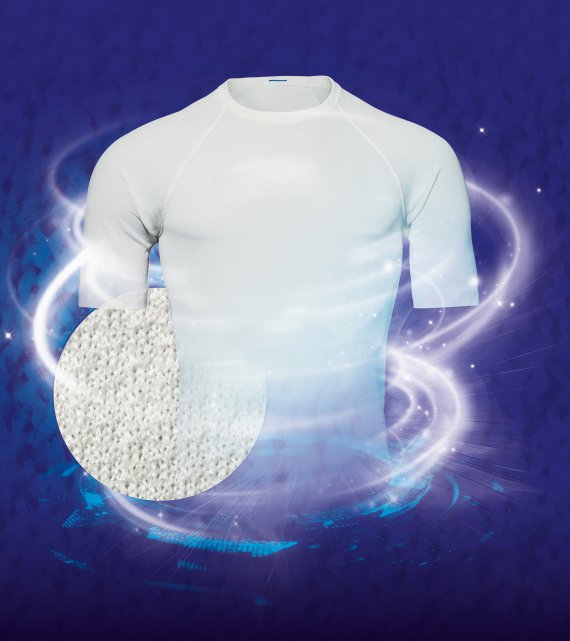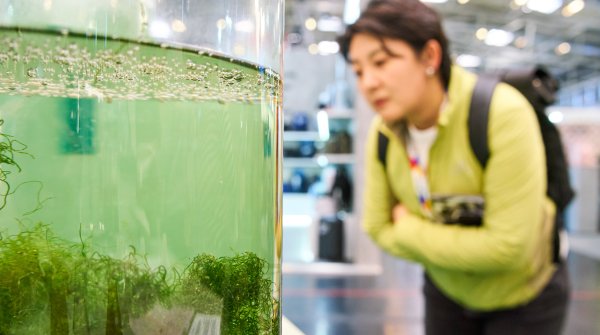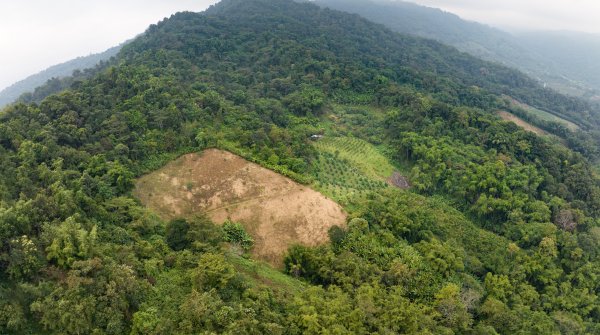On the one hand, sports markets are forecast to grow by around 3% worldwide by 2023. For the thirty leading brands, this represents a market worth $121 billion. The biggest consumers in Europe are Germany, France, the UK, Italy and Spain. [1]
On the other hand, according to the Textile Exchange™ 2024 reports on synthetic fibers[2] , the production of virgin synthetic fibers from fossil fuels rose from 67 million tons in 2022 to 75 million tons in 2023. Polyester remains the world's most-produced fiber, accounting for 57% of total fiber production, 88% of which is of conventional fossil origin. The majority of materials used in the sports industry are derived from petroleum. This is a problem, as they are highly polluting. What's more, the seventh planetary frontier - ocean acidification - has been crossed. From glacier to wave, the playgrounds of outdoor sports are under threat.
Certain widely-used materials, such as nylon, polyester, neoprene or polytetrafluoroethylene (PTFE) for waterproof membranes, are in the crosshairs, as they are non-renewable, emit high levels of CO2 when used, and pollute throughout their life cycle.
What's more, in a context where the quest for sustainability is key, this material theme is dear to consumers' hearts. Even if they are not all ready to pay more for a better product, or if they don't read labels, all consumers will be concerned if a substance is banned, or if there is a potential scandal linked to a highly polluting material...

In its 2024 materials report [3] , Textile Exchange informs us that in 2022, polyester accounted for 54% of global fiber production. In 2023, only 17% of the world's recycled fibers were of synthetic origin. The most recent studies indicate that of all fibers, whether synthetic or natural, polyester is responsible for the largest volume of greenhouse gas (GHG) emissions. Representing 125 million tonnes of GHG for the fashion and apparel, home textiles and footwear sectors, according to Textile Exchange. Equivalent to 3.8% of the European Union's total emissions in 2021, or around 30% of France's total annual emissions in 2023. A t-shirt made from 50% GRS-certified recycled polyester emits 47.7% fewer GHG emissions than a conventional poly-cotton t-shirt. "[4]
In France, the question of a circular value-added tax has been raised. This would involve modulating VAT rates according to the environmental and social impact of products or services. A reduced rate for products that are eco-designed, repairable, recycled or have a low environmental impact. And a higher rate for polluting or single-use products. Some brands have already invested in circular innovations. The new cotton project™ or Circ earth™ were already interesting on cotton and circular viscose. French company SAO™ is developing a polyamide yarn that is 100% thermomechanically recycled in France from fishing nets recovered in Occitanie. This process enables complete recycling of the material without the addition of virgin material or chemical processes, a first in France. In addition, Puma™, On™, Patagonia™, Salomon™ and PVH™, members of the "Fiber-to-fiber" consortium, have reached a milestone in textile recycling. In collaboration with French company Carbios™, they have presented the world's first garment made from enzymatically recycled polyester. This white T-shirt is produced with 100% textile waste.

What happens in the laboratory no longer stays in the laboratory. With Bill Gates' Savor™ company, we saw that making butter from CO2 was possible. In the outdoor sector, the biggest biobased challenges lie in finding alternatives to synthetics, leather and traditional plastic membranes. A biobased textile is a material made in whole or in part from renewable biomass. This biomass can be of plant, animal or microbial origin. These textiles include natural fibers (flax, hemp, organic cotton), or man-made cellulose fibers and natural polymers (chitin, keratin). Their production involves a laboratory transformation stage to obtain the final material. The results of pioneers like PIñatex™, Spinnova™ or Amni Soul™ are now industrialized.
For luggage or sports the new alternatives are numerous. Geno™ and Lululemon™ have together developed an innovative biosourced polyamide. According to the brand, this plant-based alternative yarn to Nylon™ has shown equivalent performance to conventional polyamide.
Organic linen, cotton, kapok are taking their market in outdoo.r sports with examples at Notox™ or with the Flocus supplier who worked with German outdoor cycling gear brand Protective™. Wool has long been underestimated even though it has breathtaking technological properties in view of the latest examples at Arena™, Vilebrequin™, Mover™ or Devold™. For regenerative approach protocols, Land to Market™ is a rigorous certification that highlights the players in leather and wool regenerative agriculture. It offers a systemic approach, with studies of soils, biodiversity, water pollution, etc.
The Woolmark company ™ continues its global "Wear Wool, Not Waste" campaign, to promote wool as an eco-friendly alternative to synthetic fibers. The initiative aims to raise public awareness of the growing dominance of synthetic fibers. They are expected to account for 73% of the world's fiber production by 2030, while their lifespan in landfills can exceed two centuries. Wool items are three times more likely to be donated than those made from other fibers. Although wool accounts for just 1% of the world's virgin fiber supply, it achieves a 5% donation rate, underlining its crucial role in the circular economy. This disparity between its market share and its high donation rate illustrates the importance of wool in promoting more sustainable fashion. In addition, Woolmark continues to engage with producers and brands through initiatives such as Filter by Fabric, which aims to transform the way the textile industry communicates about its products. Or Woolmark+ Roadmap, recently launched to guide the sector towards more environmentally-friendly practices. Woolmark Recycled™ is a new certification to promote quality recycled wool products.
Seaweed is an under-exploited solution. When properly cultivated and harvested in line with the requirements of regenerative agriculture, they have several advantages. The use of biosynthetic processes, which are less polluting than the transformation of fossil resources. Carbon capture, reducing the environmental footprint. And under specific, proven conditions, they can degrade naturally. For luggage, Bysco™ offers a non-woven based on mussel byssus, a natural fiber produced by mussels. On the packaging side let's cite the example of the Burton™ brand, which has developed a prototype algae-based packaging film for its snowboard boards.
Seacell™, used in blends, is well established in the outdoor sector. Yet large-scale adoption of any innovation faces challenges. The first hurdles are often technical to meet specifications with sometimes demanding expectations from brands: robustness, gloss, durability, recyclability... This is evolving as evidenced by the innovation project award presented to Keel Labs™ at Textile Exchange's Climate & Nature Impact Awards 2024. According to Tessa Callaghan, Co-Founder and CEO: "Seaweed use comes to reduce our reliance on the negative aspects of land-based agriculture that so many textiles rely on including land degradation, fresh water usage, and the use of pesticides and fertilizers. Its regenerative properties make it unique because it can be collected and harvested in ways that foster the health of its surrounding environment."
Alternatives to synthetic materials in the outdoor sector are making headway. Although many challenges remain to transform the product performance and culture associated with traditional materials. In addition, working across the range and physical durability with repairable and recyclable materials and designs will be key to reducing impact. Finally, in view of all the expectations of product performance, we may well ask whether there is such a thing as a low-impact technical garment? And how can we differentiate between the very specific use of a technical garment by a sportsman or woman versus an urban wearer who will use it in conditions requiring less technology?
For brands, understanding that in these upheavals of material choice, finance, purchasing and data are just as important as R&D in product sustainability. Finance for regulatory compliance (CSRD) and double materiality measurement. Purchasing to strengthen the resilience of supply chains. Data to ensure traceability and transparency, and cooperative R&D to keep moving forward. Decentralize action and impact measurement: suppliers, brands, departments, each entity must measure its own impacts to understand double materiality. Above all, make every step of progress visible, while prioritizing actions according to their impact. Proposals for unified impact assessment and eco-design systems are currently being developed. To date, they favor robustness, longevity and product end-of-life, yet some membranes are eternal pollutants that are both robust and harmful. While there is no miracle cure for the fashion industry's environmental crisis, changing the way we source, buy and produce is crucial to finding solutions.
So, to move away from the almost fossilized world, shouldn't we transform our relationship with performance?
- ISPO awards
- Mountain sports
- Bike
- Design
- Retail
- Fitness
- Health
- ISPO Job Market
- ISPO Munich
- ISPO Shanghai
- Running
- Brands
- Sustainability
- Olympia
- OutDoor
- Promotion
- Sports Business
- ISPO Textrends
- Triathlon
- Water sports
- Winter sports
- eSports
- SportsTech
- OutDoor by ISPO
- Heroes
- Transformation
- Sport Fashion
- Urban Culture
- Challenges of a CEO
- Trade fairs
- Sports
- Find the Balance
- Product reviews
- Newsletter Exclusive Area
- Magazine





